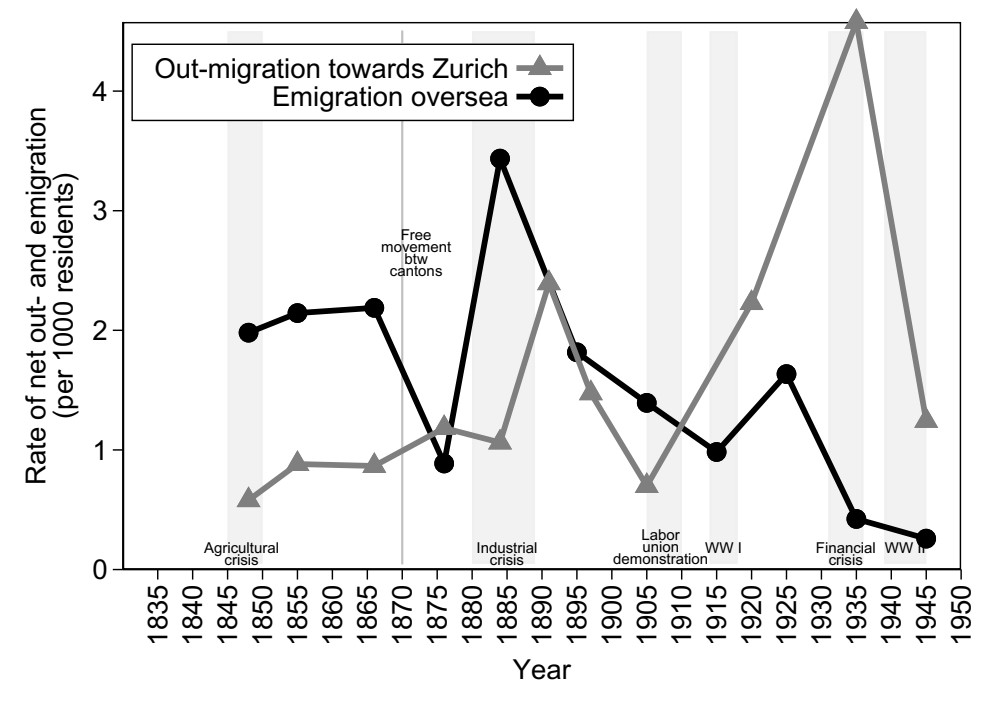This study documents the components of Zurich’s population growth during the industrial revolution, between 1760 and 1949. A major innovation in this project is the consideration of the role played by international migration, in addition to the contribution of natural increase (i.e. the excess of the number of births over the number of deaths) and internal migration (i.e. from remaining areas of Switzerland). The results challenge demographic theories that attribute a predominant role to natural increase in city growth. While natural increase was actually negative among the native inhabitants, Zurich’s population grew essentially through migration, with dramatic changes in the internal versus international sources of migrants over time. While movements from rural areas of Switzerland dominated in the early periods, Swiss rural migrants chose to move overseas during the agricultural and industrial crises in the second half of the 19th century. This lost domestic growth potential was compensated for by a sharp increase in immigration from the neighboring countries to Zurich. In the first half of the 20th century, however, international migration in Europe collapsed and potential emigrants from Switzerland were redirected from increasingly restrictive overseas destinations back to domestic cities. After World War II, international movements started to dominate city growth again. This case study underlines the importance of looking beyond methodological nationalism when analyzing city growth. By taking account of both domestic and international migration flows, we increase our understanding of the role played by political forces and a city’s development trajectory within the international arena of competing migrant destinations.
Emigration from Swiss regions towards Zurich and oversea destinations, 1835-1950 (annualized rates):

Source: Lerch, M. (forthcoming): Migration and city growth: an international perspective of Zurich, 1836–1949, in Population-E